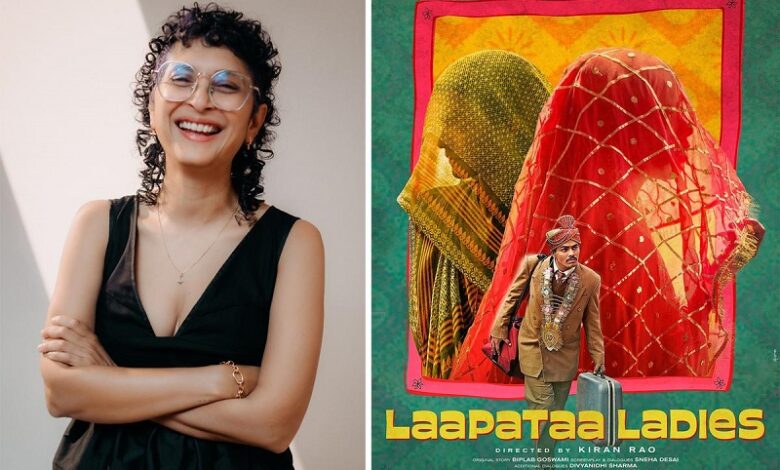Kiran Rao Accused Of Copying 90s Film To Make Laapataa Ladies

News Mania desk/Agnibeena Ghosh/14th May 2024
Kiran Rao’s directorial venture, Laapataa Ladies, has garnered widespread acclaim for its poignant portrayal of the intertwined destinies of two brides entangled in a mix-up during a train journey. Despite its commendable exploration of women’s rights and societal conventions, the film finds itself embroiled in controversy over alleged similarities to Ananth Mahadevan’s 1999 film, Gunghat Ke Pat Khol. The unfolding debate underscores the intricate dynamics of creative inspiration and the ethical considerations surrounding intellectual property rights in the realm of cinema.
Ananth Mahadevan, renowned for his collaborations with Aamir Khan in several films, including Akele Hum Akele Tum, Ishq, and Mann, recently voiced his concerns in an interview with Mid-day regarding the perceived parallels between Laapataa Ladies and his earlier work, Gunghat Ke Pat Khol. In his film, the narrative revolves around a mix-up at a railway station involving a veiled bride, precipitating a series of mistaken identities and romantic entanglements.
Speaking about the alleged resemblances, Mahadevan elucidated, “In our film, a boy from the city goes to his village to get married. The mix-up occurs at the railway station when he instructs his new bride, concealed beneath a ghunghat (veil), to wait on a bench while he attends to an errand. Upon his return, he inadvertently joins the wrong bride.” Furthermore, he highlighted similarities such as a scene where a character struggles to identify the veiled bride, reminiscent of a corresponding sequence in his film.
Mahadevan’s surprise at the unavailability of Gunghat Ke Pat Khol on online platforms, coinciding with the release of Laapataa Ladies on OTT platforms, adds another layer to the controversy. While refraining from directly confronting Aamir Khan or Kiran Rao, the producer and director of Laapataa Ladies, Mahadevan chose to view the alleged resemblances as a form of flattery rather than a catalyst for conflict.
In response to these allegations, neither Aamir Khan nor Kiran Rao has issued statements. Laapataa Ladies, initially released in theaters in March and subsequently premiered on OTT platforms, has continued to captivate audiences with its compelling narrative and stellar performances. However, the emergence of plagiarism accusations underscores the imperative of upholding intellectual property rights and conducting thorough scrutiny of creative works to discern their origins and influences.
The controversy surrounding Laapataa Ladies raises pertinent questions about the nature of creative inspiration and the ethical boundaries of artistic expression. While artists often draw inspiration from diverse sources, the line between homage and plagiarism remains subjective and contentious. The nuanced exploration of similar themes or narrative elements in distinct cinematic works underscores the complexity of the creative process and the interplay of cultural influences.
Moreover, the episode underscores the importance of transparency and acknowledgment within the creative community. Clear attribution and recognition of sources not only uphold the integrity of artistic endeavors but also foster a culture of respect and collaboration among creators. By acknowledging the contributions of predecessors and peers, artists honor the rich tapestry of cultural heritage while forging new pathways of expression and innovation.
Ultimately, the debate surrounding Laapataa Ladies serves as a reminder of the evolving landscape of artistic expression and the ethical imperatives that accompany it. As the film industry continues to navigate the complexities of creativity and originality, the need for robust mechanisms to safeguard intellectual property rights and promote ethical practices remains paramount. In embracing these principles, artists and creators can uphold the integrity of their craft while contributing to a vibrant and inclusive cultural milieu.






